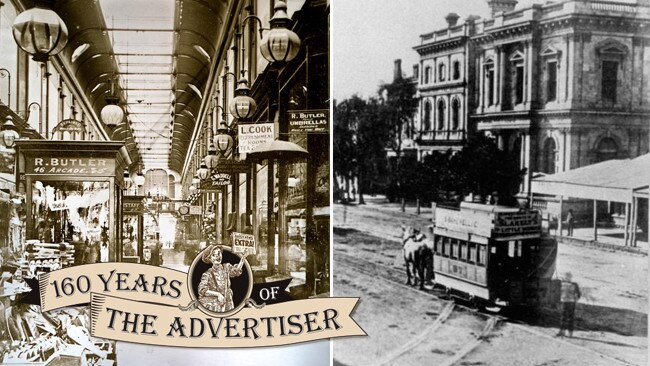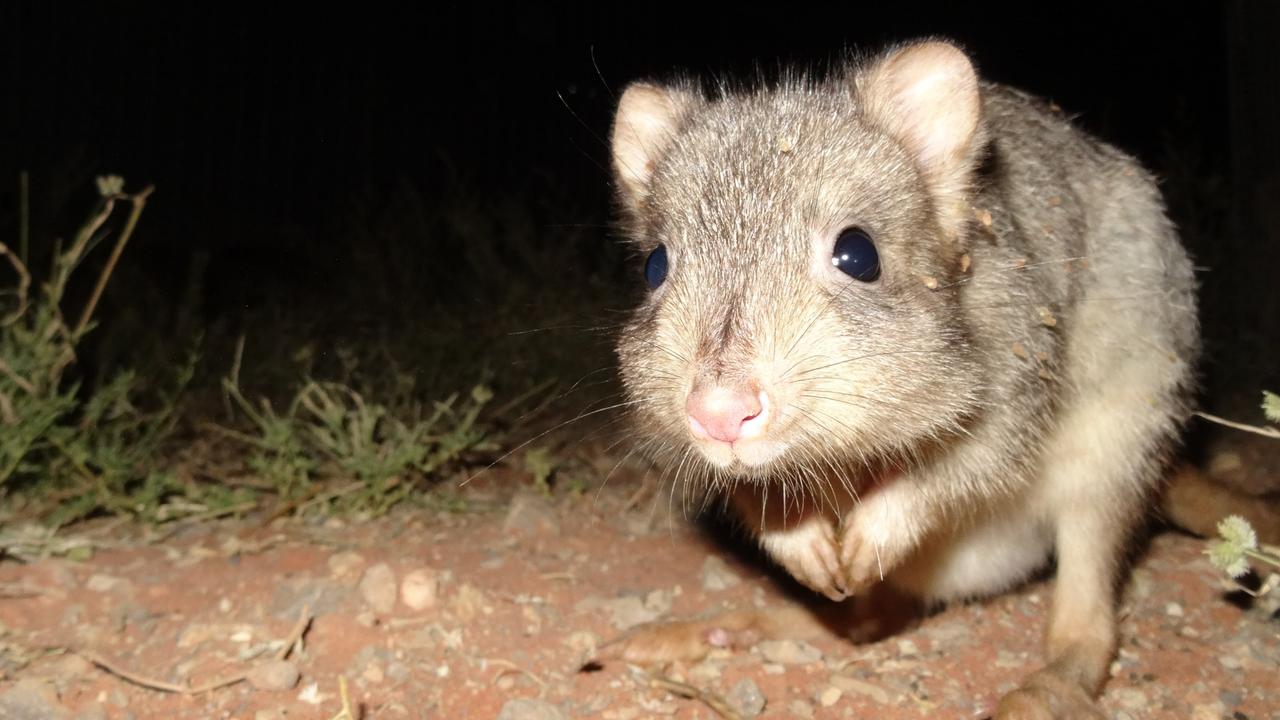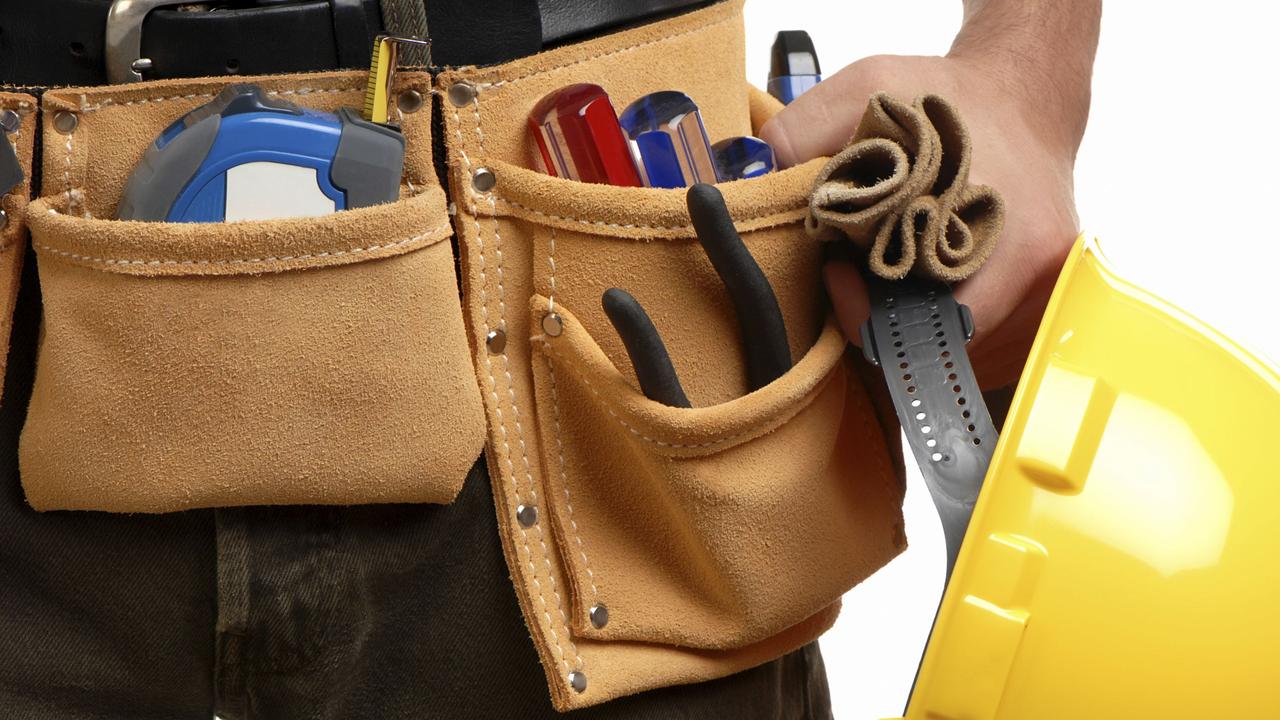South Australia 1858-1890: The boom and bust years that shaped our state
THEY are known as the “boom and bust years”, the forty years between 1850 and 1890 when the economic fortunes in the history of South Australia soared and sank in equal measure.
SA News
Don't miss out on the headlines from SA News. Followed categories will be added to My News.
THEY are known as the “boom and bust years”, the forty years between 1850 and 1890 when the economic fortunes in the history of South Australia soared and sank in equal measure.
After the copper boom of the 1840s, the early 1850s saw South Australia heading into its first serious economic decline. Discovery of gold in Victoria saw a severe labour shortage in Adelaide as workers left in droves to make their fortunes across the border.
The population expansion in Victoria, however, led to a high demand for South Australian wheat. By 1860, SA had more arable land, 145,000 ha, than any other state, and wheat had outstripped copper in exports.
The economic conditions improved when prospectors returned to the state with their gold nuggets, with many finding work or investing in the new copper fields found at Moonta, Burra and Wallaroo throughout the 1860s.
South Australia became a self-governing colony in 1856 with the ratification of a new constitution by the British parliament that was one of the most democratic in the world.
It gave the vote to all male British subjects, 21 years or older, including indigenous men. But it didn’t provide for political stability, which first emerged in the 1890s when political parties were established and organised.
Women owning property in SA first gained the vote in 1861, but it wasn’t until 1894 Constitutional Amendment Act that all women gained the same voting rights as men.
Other than wheat, the crop keeping SA afloat during the mid-19th century period was grapes, made into wine.
During the 1850s more than 5000 Germans settled in South Australia and began the wine industry in the Barossa Valley that saw the state producing two million litres a year by the mid-1870s.
South Australia was a haven for many religious refugees leaving Europe over this period, and the German Lutherans established the influential Hermmannsberg Mission in Central Australia in 1870.

Four years earlier, Saint Mary MacKillop co-founded the Sisters of St Joseph of the Sacred Heart in rural South Australia in 1866.
Improving communications and transport links helped transformed the state and led to another economic recovery. The Melbourne-Adelaide telegraph line was only opened in 1858 and by 1880 the telephone was introduced.
Expansion of the rail network, from 200 miles to 2000 miles, transformed SA between 1875 to 1880.
The state became the first part of the British Empire to legalise Trade Unions in 1877. Workers gained rights to more dedicated time off and sport became a popular pastime. The Port Adelaide Football Club was established in 1870 and the first cricket match played at Adelaide Oval in 1873.
By 1880, the colony was at the height of its prosperity. A number of the major buildings of North Terrace were built at this time, including the impressive Adelaide Jubilee International Exhibition Building of 1887, which was inexplicably knocked down in 1962.
But the failure of the Commercial Bank of South Australia in February 1886 was an indication South Australia was headed for another bumpy ride and by the early 1890s, the state, like the rest of Australia, was affected by a severe economic depression.
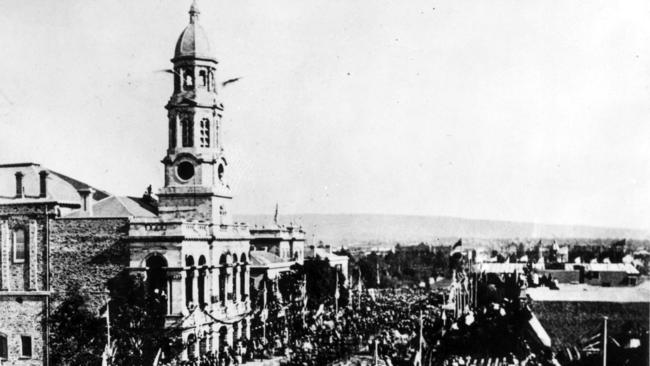
Timeline — South Australia 1858-1890
1858
■ South Australia’s population is estimated at 118,665.
■ July 12: The Advertiser publishes its first edition.
■ Explorer Percy Egerton Warburton establishes that Lake Eyre and Lake Torrens are separate bodies of water.
1859
■ Aboriginal Mission established at Point McLeay on the shores of Lake Alexandrina by the Aborigines’ Friends’ Association.
■ SA Government offers £2000 reward for first person to cross the continent south to north, towards finding a route for an Overland Telegraph Line.
■Copper is discovered on a property near Kadina called Walla-Waroo. It leads to the creation of the Wallaroo Mines in 1860.
1861
■Wallaroo-Moonta mines attract numerous Cornish and Welsh miners. Kadina-Wallaroo-Moonta area becomes known as ‘Little Cornwall’.
■ Municipal Corporations Act allows South Australian women to vote in local government elections, which is an Australian first.
1860
■ Adelaide’s first reservoir, Thorndon Park, supplies mains water to the city.
■ The Select Committee of the Legislative Council into Aborigines in South Australia finds that ‘all the evidence goes to prove that they have lost much, and gained little or nothing by their contact with Europeans’.
■ SA pastoralist Thomas Elder imports camels for use in the interior.
1862
■ South Australian Institute Museum opens (now South Australian Museum).
■ Coopers Brewery established.
1863
■ The South Australian Gas company establishes gas works at Brompton; first Adelaide businesses are lit by gas in June.
■ Northern Territory acquired by South Australia and land sales begin. The Northern Territory was previously controlled by New South Wales.
1864
■ The First Adelaide Cup is run at Thebarton Racecourse. The race is won by Falcon.
1865
■ South Australia’s Surveyor-General, George Woodroffe Goyder, surveys the state’s north to define areas which received enough rain to support agriculture or livestock. This establishes ‘Goyder’s Line’. The areas to the north of the line are deemed to receive insufficient rain for farming.
■ Bank of Adelaide established. It eventually merged with ANZ Bank in 1979.
1866
■ Sisters of St Joseph of the Sacred Heart founded at Penola by Sister Mary MacKillop and Father Julian Tenison Woods. It becomes the first religious order to be established by an Australian.
■ Adelaide Town Hall opened.
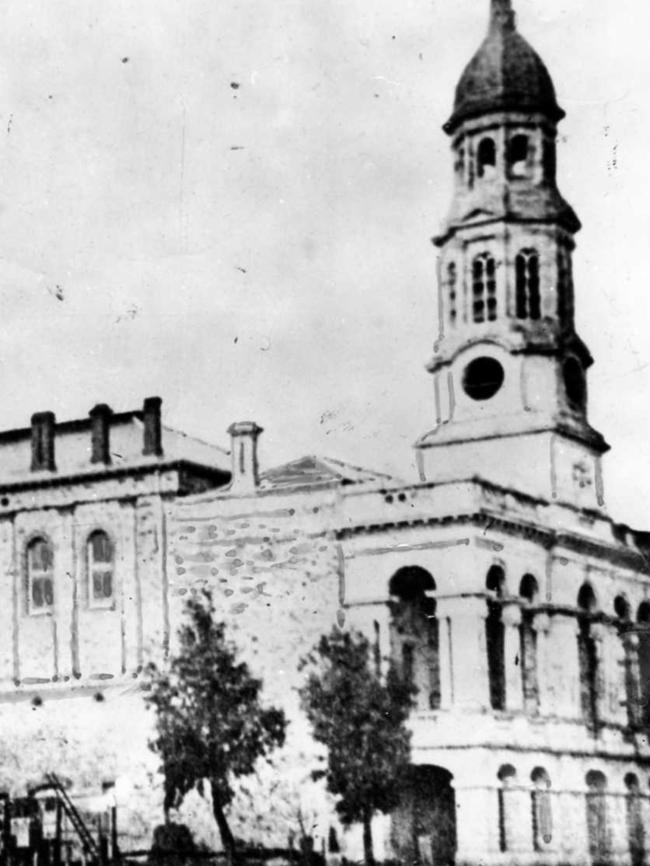
1867
■ Prince Alfred, Duke of Edinburgh, arrives at Glenelg in HMS Galetea to begin tour of the Australian colonies.
■ Construction of Adelaide’s General Post Office starts. The building is completed in 1872.
■ Adelaide streets first lit by gas lighting.
1868
■ Charles Mullen develops mullenising — a method of clearing mallee scrub, near Wasleys, north of Adelaide.
1869
■ South Australian Chamber of Manufacturers founded.
■ George Woodroffe Goyder surveys Palmerston (now Darwin).
■ South Australian Yacht Club formed.
■ Building of St Peters Cathedral commences (completed 1904).
1870
■City Market officially opened in Grote St.
■Construction begins on the Overland Telegraph Line, which will connect Adelaide with London.
1871
■ South Australia becomes the first colony to allow a man to marry his deceased wife’s sister. Other colonies pass similar legislation throughout the 1870s.
1872
■ The Miscellaneous Leases Act permits the lease of Aboriginal Reserves for up to 14 years.
■ New General Post Office in King William St, Adelaide, opens.
■ PG Warburton expedition from South Australia to Western Australia starts. In 1874, it becomes the first expedition to cross the continent from the centre through the Great Sandy Desert to the west.
1873
■ Eight-hour working day is gradually established in South Australia.
■ Adelaide Oval opens.
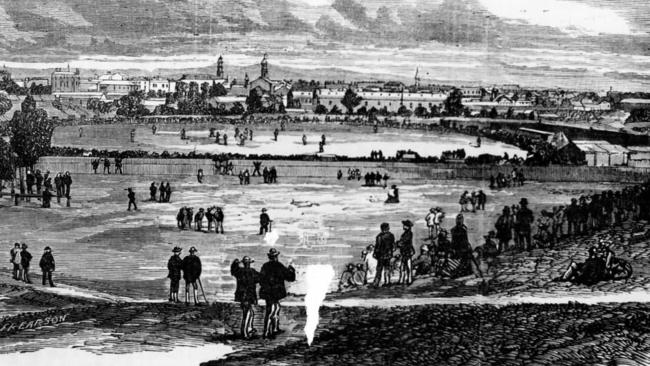
1874
■ The University of Adelaide Act establishes South Australia’s first university. Teaching begins in 1876.
■ The English cricket team comes to South Australia for the first time, playing at Adelaide Oval.
1875
■ Compulsory, but not full-time, education established for 7—13 year olds in South Australia.
■ Adelaide Steamship Company Ltd founded to ship cargo and passengers between Adelaide and Melbourne.
■ Kangaroo Island connected to Normanville by submarine cable.
1876
■Onkaparinga Handicap Steeplechase (now known as Great Eastern Steeplechase) first run.
■ Stump jump plough invented by the Smith brothers of Kalkabury, near Maitland. It is unveiled at the Moonta show on 9 November and comes to revolutionise agricultural practises worldwide.
■ The creation and registration of trade unions permitted in South Australia — an Australian first.
■ Adelaide Children’s Hospital founded.
1877
■ Telegraph link between Adelaide and Perth completed.
■ Catherine Helen Spence, pictured left, is the first female member of a public board when appointed to the East Adelaide School Board of Advice.
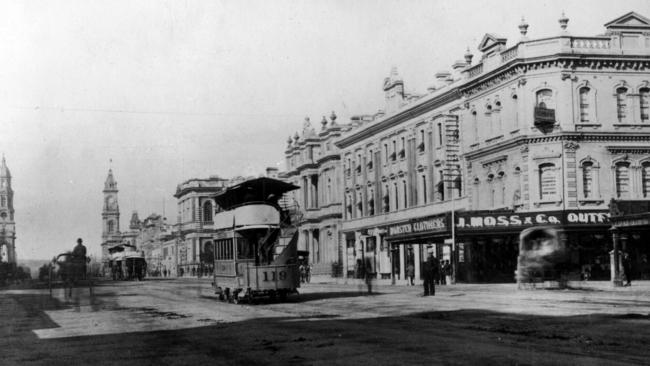
1878
■ Horse-drawn tram system commences operation between Adelaide and Kensington.
■ Establishment of a railway between Kapunda and North-West Bend (now Morgan) to take advantage of River Murray steamboat trade.
■ Kapunda copper mine closed.
■ South Australia’s population passes 250,000.
1879
■First road bridge across the lower Murray completed at Edwards Crossing (now Murray Bridge).
■ The Advanced School for Girls becomes the first public secondary school in South Australia. It is also the first public secondary school for girls in Australia.
1880
■First Salvation Army meeting in Australia is held in Adelaide Botanic Park by Edward Saunders and John Gore.
1881
■ University of Adelaide is the first Australian university to admit women to degrees. The first female graduate is Edith Dornwell, who in 1885 is the first woman to graduate in Science in Australia.
■ Adelaide is the first Australian capital city to be connected to a waterborne sewerage system.
1882
■ Adelaide to Port Augusta railway opened.
■ City Baths open in King William St.
1883
■Adelaide Telephone Exchange opens.
■ Roseworthy Agricultural College established — the first agricultural college in Australia.
■ Adelaide Zoological Gardens opens on present site. Birds and mammals had previously been kept at the Botanic Gardens.
1884
■ South Australia’s first naval vessel, HMCS Protector, arrives at Semaphore.
■ First Test match played at Adelaide Oval; England wins.
■ Taxation Act introduces land and income tax in South Australia at a rate of threepence in the pound on earned income, and sixpence in the pound on unearned income.
■ Married Women’s Property Act 1883-84 allows married women to own and administer property in their own names.
■ Port Adelaide Football Club wins its first South Australian Football Association Premiership.
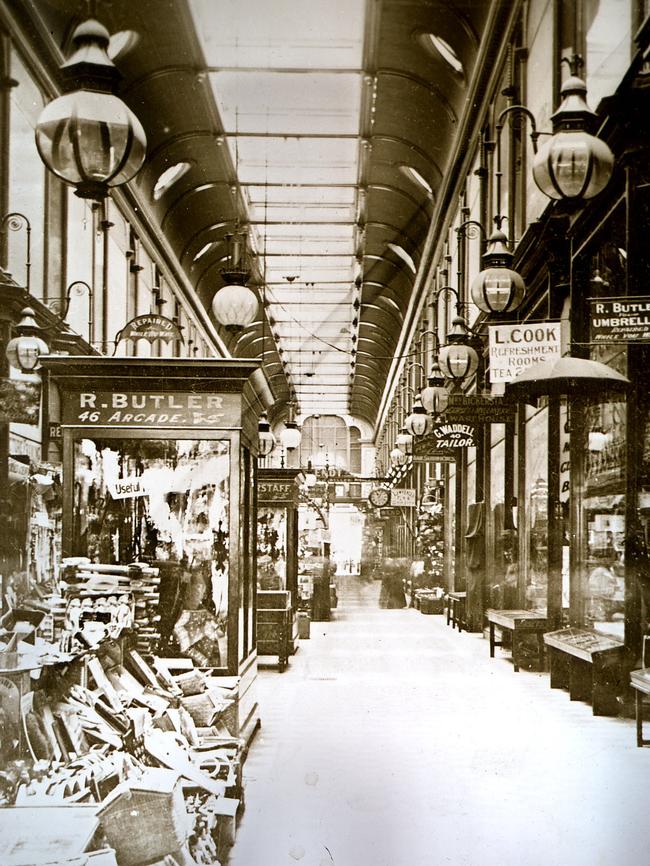
1885
■ South Australian branch of the Geographical Society of Australasia formed; becomes the Royal Geographical Society of Australasia in 1886.
■ Adelaide Arcade opens. It includes 50 shops and Turkish baths.
■ Kangaroo Island designated as a sanctuary for Ligurian bees. The Ligurian bees of Kangaroo Island are one of the purest strains of bee in the world and were nominated as a National Trust Heritage Icon in 2002.
1886
■ South Australian branch of Woman’s Christian Temperance Union (WCTU) established.
1887
■ Adelaide to Melbourne railway opens.
■ David Lindsay explores the Simpson Desert relying on Aboriginal knowledge of wells, and his team of camels.
■ 1887—1888: Adelaide Jubilee International Exhibition held to showcase produce and manufactured goods, and celebrate 50 years of settlement.
1888
■Star of Greece wrecked near Willunga; 17 lives lost.
■ First Agricultural Bureaux established in South Australia.
■ Broken Hill connected to Adelaide by railway.
1889
■ First section of Parliament House completed (commenced 1873).
■ School of Mines and Industries opened in Adelaide. The school’s name is changed to South Australian Institute of Technology in 1960 and it becomes part of the University of South Australia in 1991.
■ Port Pirie smelters begin operations.
■ Drought and depression 1880s — 1890s.
■ High level of unemployment in Adelaide.
Timeline courtesy of the State Library of South Australia.
Originally published as South Australia 1858-1890: The boom and bust years that shaped our state

